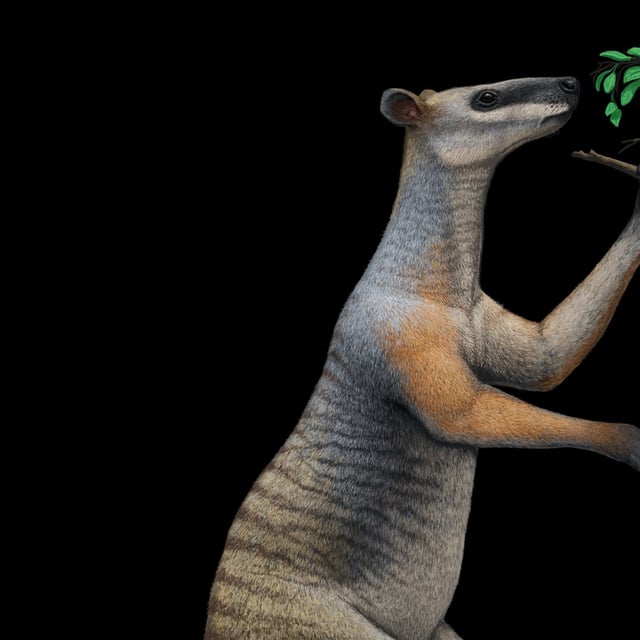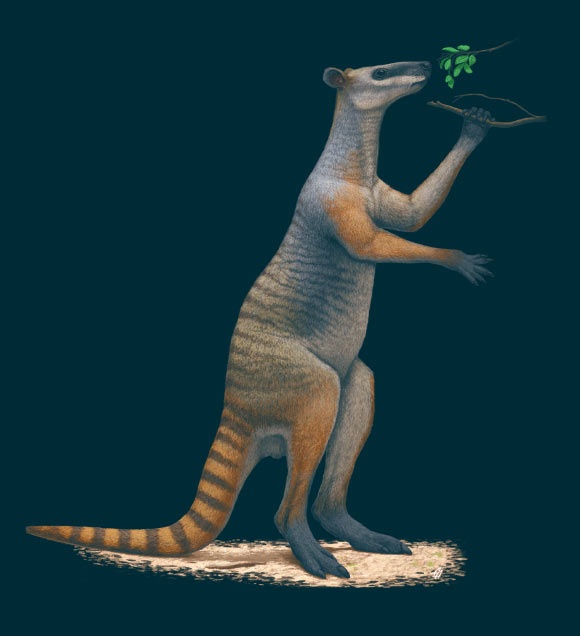Overview
- Strontium isotope analysis of Protemnodon teeth shows their home ranges were surprisingly small, spanning just 3.6–19.8 km², despite their large body size of up to 170 kg.
- Limb anatomy indicates these giant kangaroos were primarily quadrupedal, with limited ability for long-distance hopping, unlike modern kangaroos.
- Protemnodon thrived in stable rainforest environments at Mt Etna, Queensland, between 500,000 and 280,000 years ago, relying on local shrubs for sustenance.
- Climate drying around 280,000 years ago disrupted their rainforest habitats, leaving these homebound species unable to adapt or relocate, contributing to their extinction.
- The study demonstrates the use of strontium isotopes as a 'paleo-GPS', offering new insights into ancient animal movement and extinction dynamics.



